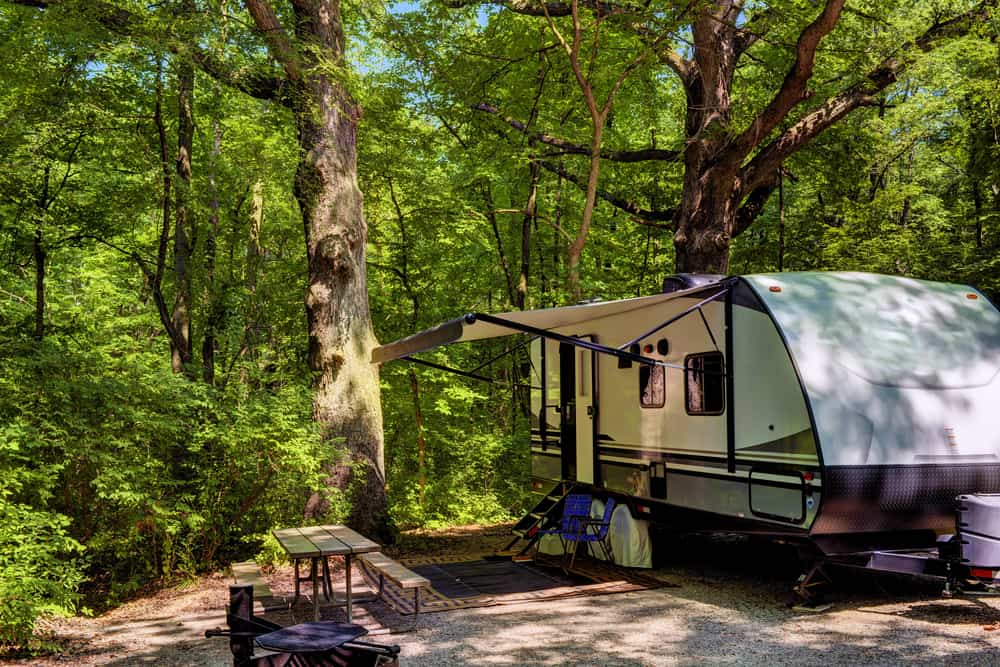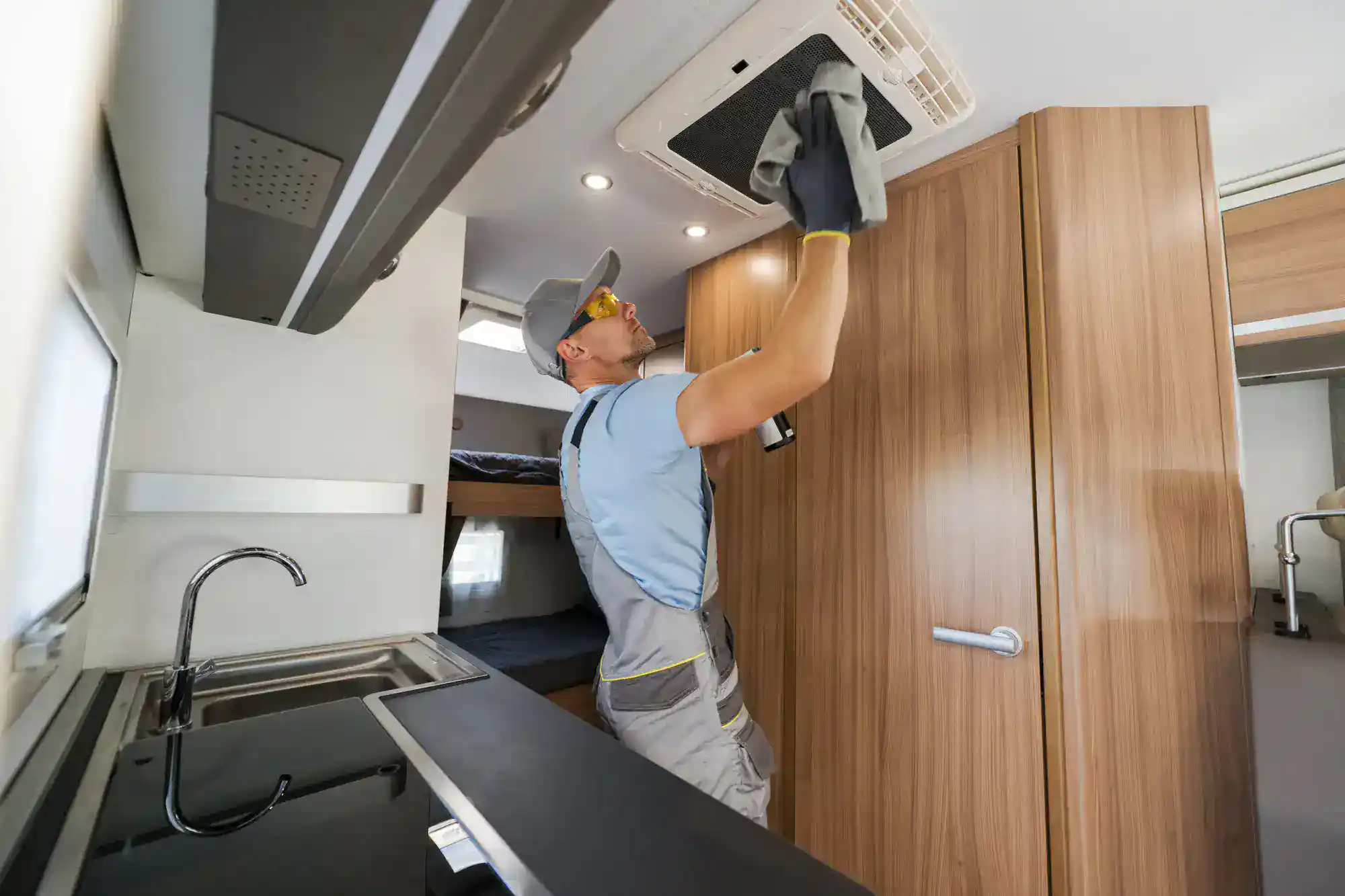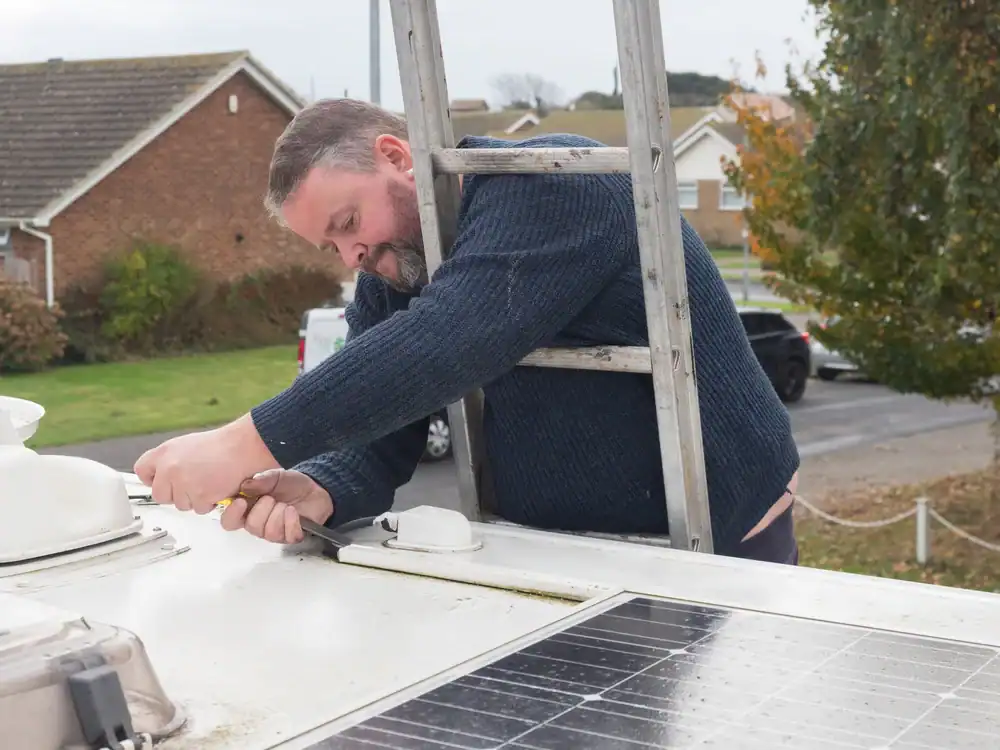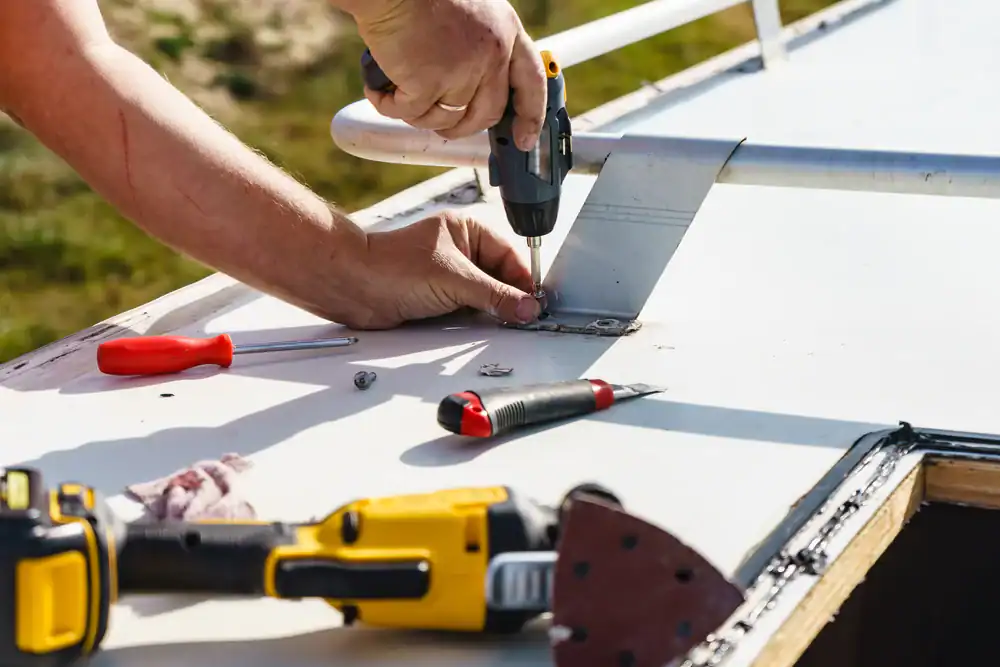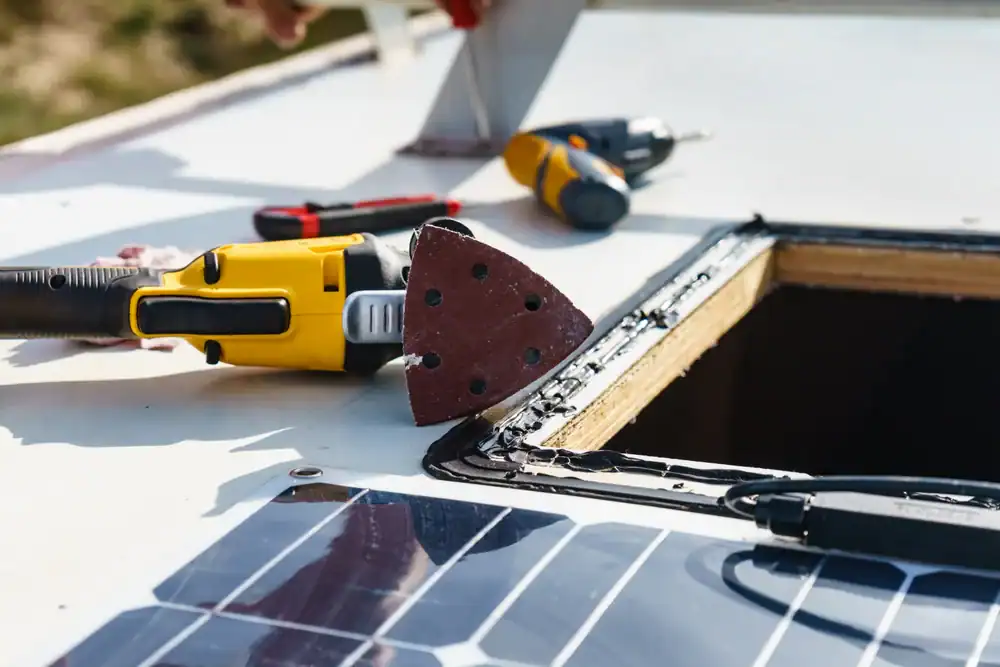Summary:
Weather-Related RV Roof Damage
Weather is your RV roof’s biggest enemy, and North Carolina throws everything at it. Our summers bring intense UV rays that break down roofing materials over time, while sudden storms can dump inches of rain in minutes.
Temperature swings are particularly brutal. Your roof expands in the heat and contracts when it cools, creating stress on seams and sealants. Add in hail, high winds, and the occasional ice storm, and you’ve got a recipe for roof problems that sneak up on you.
UV Damage and Heat Stress on RV Roofing Materials
The sun might feel great on your face, but it’s slowly destroying your RV roof. UV rays break down the chemical bonds in rubber roofing materials, causing them to become brittle and crack. This process happens gradually, so you might not notice until you see actual splits in the membrane.
Heat makes the problem worse. When your roof temperature hits 150 degrees or more on a summer day, the constant expansion and contraction cycles stress every joint and seam. Rubber roofs are especially vulnerable because they’re designed to be flexible, but UV damage takes that flexibility away.
EPDM rubber roofs typically show the first signs of UV damage around the edges and seams where the material is thinnest. You’ll notice the surface becoming chalky or developing small cracks that look like spider webs. TPO roofs handle UV better initially, but they can still degrade, especially if the protective coating wears off.
The real problem starts when those small cracks let water penetrate. Once moisture gets under your roofing membrane, it can spread along the roof deck and cause rot in areas you can’t see. What started as minor UV damage becomes a major structural repair that costs thousands instead of hundreds.
Storm Damage and Water Infiltration Issues
The sun might feel great on your face, but it’s slowly destroying your RV roof. UV rays break down the chemical bonds in rubber roofing materials, causing them to become brittle and crack. This process happens gradually, so you might not notice until you see actual splits in the membrane.
Heat makes the problem worse. When your roof temperature hits 150 degrees or more on a summer day, the constant expansion and contraction cycles stress every joint and seam. Rubber roofs are especially vulnerable because they’re designed to be flexible, but UV damage takes that flexibility away.
EPDM rubber roofs typically show the first signs of UV damage around the edges and seams where the material is thinnest. You’ll notice the surface becoming chalky or developing small cracks that look like spider webs. TPO roofs handle UV better initially, but they can still degrade, especially if the protective coating wears off.
The real problem starts when those small cracks let water penetrate. Once moisture gets under your roofing membrane, it can spread along the roof deck and cause rot in areas you can’t see. What started as minor UV damage becomes a major structural repair that costs thousands instead of hundreds.
Physical Damage and Wear Issues
Your RV roof wasn’t designed to be a highway, but it takes physical abuse from multiple sources. Tree branches are the obvious culprit, but foot traffic, falling debris, and even maintenance activities can cause damage that leads to leaks.
The challenge is that physical damage often looks minor on the surface while causing significant problems underneath. A small puncture or tear can let water reach areas where it causes extensive damage before you even know there’s a problem.
Tree Branch Damage and Punctures
Tree branches cause more RV roof damage than most people realize, and it’s not always dramatic. Sure, a big branch falling during a storm will obviously punch a hole in your roof, but the real problem is the constant scraping and scratching that happens when you’re parked under trees or driving through areas with low-hanging branches.
Rubber roofing materials are designed to be flexible, but they’re not designed to resist punctures. Even small branches can create tiny holes that are hard to spot during a casual inspection. These micro-punctures don’t cause immediate leaks, but they give water a pathway into your roof system where it can cause extensive damage over time.
The areas around roof-mounted equipment are especially vulnerable because the roofing material is often stretched or stressed during installation. Air conditioning units, satellite dishes, and solar panels create high spots that are more likely to contact branches, and the mounting hardware can concentrate stress in ways that make punctures more likely.
What makes tree damage particularly frustrating is that it often happens gradually. You might park under the same trees for months without problems, but temperature changes, wind, and normal settling can shift your RV just enough to bring branches into contact with your roof. By the time you notice the damage, water has already been getting in for weeks or months.
Foot Traffic and Maintenance-Related Damage
Walking on your RV roof is sometimes necessary, but every step risks damage. Most RV roofs aren’t designed to support concentrated weight, especially when the roofing material is hot and soft. Even careful foot placement can cause stress cracks or push debris into the membrane hard enough to create punctures.
Maintenance activities are particularly risky because they often involve tools, equipment, and extended time on the roof. Installing or servicing air conditioning units, cleaning gutters, or working on antennas puts stress on roofing materials in ways they weren’t designed to handle. Dropped tools, knee pressure, and dragging equipment across the surface all contribute to damage.
The problem is compounded because maintenance damage often happens in areas where water is most likely to collect. Working around vents, air conditioning units, and roof edges disturbs sealants and can create gaps that aren’t immediately obvious. These areas are also where structural support is often weakest, making them more susceptible to damage from concentrated loads.
Ladder placement is another common source of damage that people don’t consider. Leaning a ladder against your RV or placing it on the roof can create pressure points that crack or puncture roofing materials. Even rubber roof boots designed to protect against ladder damage can fail if the roof material underneath is already stressed from age or previous damage.
Protecting Your RV Investment Through Proper Roof Care
Understanding what threatens your RV roof is the first step in protecting your investment. Most roof damage is preventable with regular inspections and prompt attention to small problems before they become major repairs.
The key is catching issues early when they’re still manageable and affordable to fix. Whether it’s UV damage, storm damage, or physical wear, addressing problems quickly saves you money and prevents the headaches that come with major water damage.
If you’re dealing with roof issues or want a professional assessment of your RV’s condition, we can help you understand exactly what you’re facing and what your options are.

